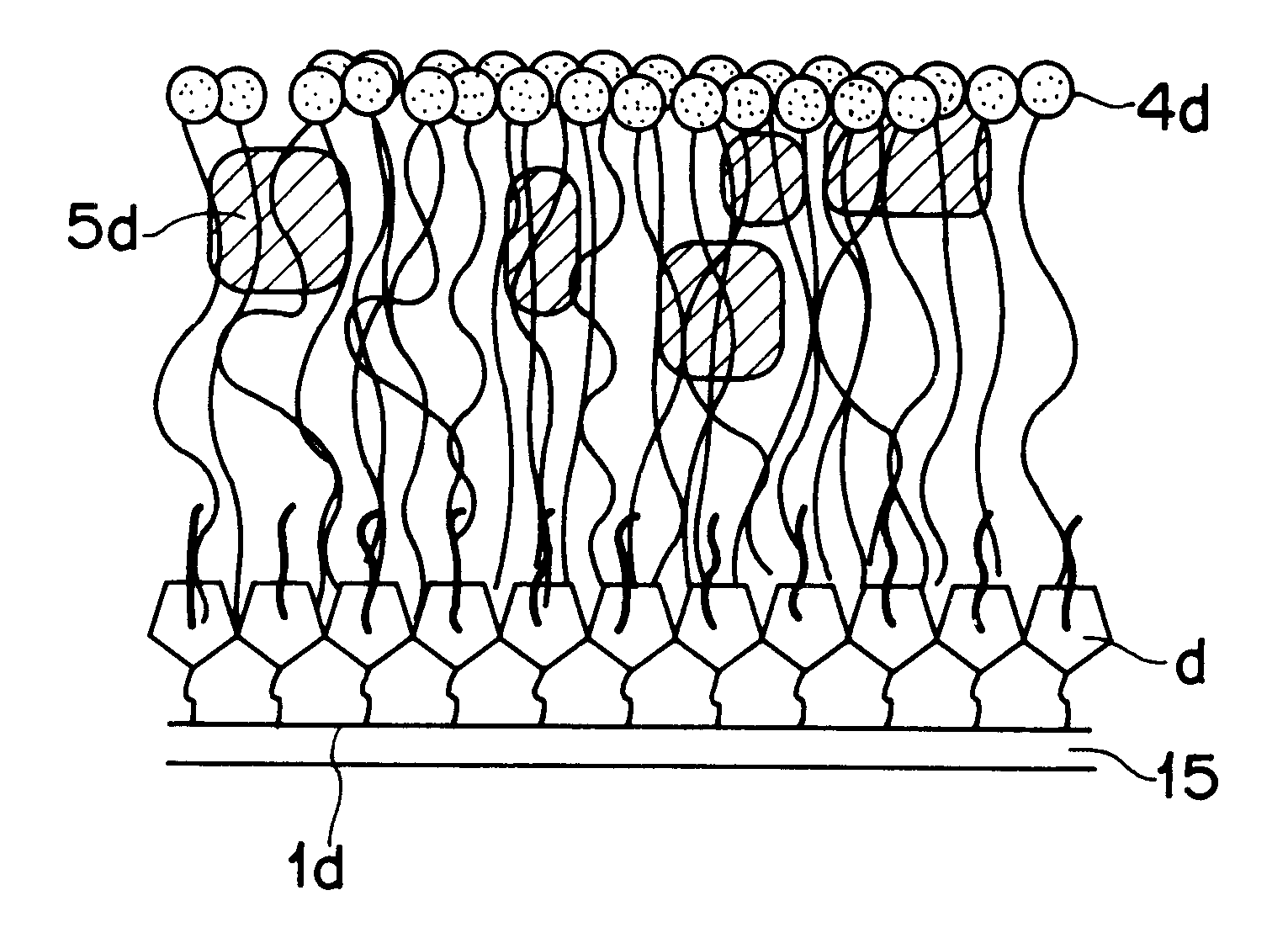Wire for welding
a wire and welding technology, applied in the field of wire for welding, can solve the problems of inconvenient wire feed, wire liner blockage, wire feed failure, etc., and achieve the effect of improving the feedabilities of wires, convenient orientation, and improving the feedability of wires
- Summary
- Abstract
- Description
- Claims
- Application Information
AI Technical Summary
Benefits of technology
Problems solved by technology
Method used
Image
Examples
examples
[Examples]
Welding wires of the invention were made, and the results of comparison of their characteristic properties with those of comparative examples are described.
Initially, metal hoops indicated by M1 and M2, which, respectively, had compositions indicated in Table 1 below, were packed with a combination of fluxes for carbon steel indicated by F1 and F2 and, respectively, having compositions indicated in Table 2, thereby providing basic wires. These wires were each subjected to wire drawing to obtain flux-cored wires for carbon steels with wire diameters of 1.2, 1.4 and 1.6 mm. It will be noted that, as shown in Table 2 below, the fluxes act to increase or decrease the content by wt % of Fe powder, and the fluxes were packed in the hoop so that the weight of the fluxes per total weight of the wire (i.e. flux rate) was set at 12 and 14 wt %.
TABLE 1 Symbol for Chemical Composition of Hoop (wt %) Hoop C Si Mn P S M1 0.08 0.8 0.7 0.009 0.005 M2 0.01 0.04 1.5 0.013 0.005
TABLE 1 Symbo...
PUM
| Property | Measurement | Unit |
|---|---|---|
| diameters | aaaaa | aaaaa |
| diameters | aaaaa | aaaaa |
| diameters | aaaaa | aaaaa |
Abstract
Description
Claims
Application Information
 Login to View More
Login to View More - R&D
- Intellectual Property
- Life Sciences
- Materials
- Tech Scout
- Unparalleled Data Quality
- Higher Quality Content
- 60% Fewer Hallucinations
Browse by: Latest US Patents, China's latest patents, Technical Efficacy Thesaurus, Application Domain, Technology Topic, Popular Technical Reports.
© 2025 PatSnap. All rights reserved.Legal|Privacy policy|Modern Slavery Act Transparency Statement|Sitemap|About US| Contact US: help@patsnap.com



